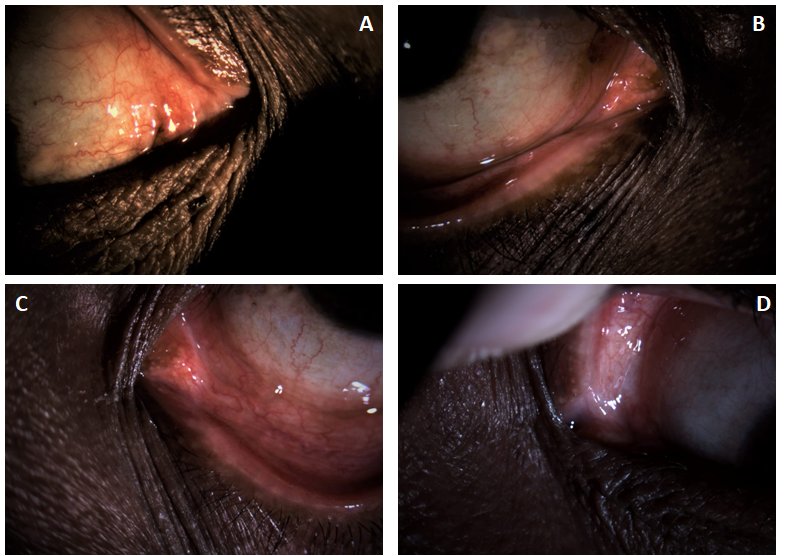INTRODUCTION
Article
The absence of punctum is known as punctal agenesis. It is a rare but known cause of epiphora. To diagnose a case of punctal agenesis, a careful history and a meticulous ocular examination is a must in clinching the diagnosis. Punctal agenesis has important associated ocular and systemic associations.
The lacrimal passages develop along the line of the cleft between the lateral nasal process and the maxillary process of the embryonic face. Proximal lacrimal outflow dysgenesis involving the punctum and canaliculus is sparsely documented in the literature [1].
CASE REPORT
A 25-year-old male, presented with a history of watering in both the eyes for the past many years and wanted medicines for the same. There were no other ocular complaints nor there a history of any previous ophthalmic consultation. There was no other significant antenatal, postnatal, medical, surgical, family, and traumatic or drug abuse history. His systemic examination was within normal limits. The only positive finding in his detailed ocular examination under slit lamp was the absence of right upper, right lower and left lower punctum and only left upper punctum was present (Figure 1). Syringing through the only present punctum could not be carried out as the punctum dilator and the syringing canula was not able to penetrate the punctum, signifying a probable complete absence of the lacrimal system ahead. The patient did not give consent for any further investigations and procedures.
DISCUSSION
Agenesis of one or more lacrimal puncta is a rare cause of presentation to ophthalmologists. Morphogenesis of the lacrimal system begins at week 6 of gestation. Many congenital anomalies of the lacrimal system may occur if development is affected during this time [2]. It is very rare to have intact canaliculi with a punctal agenesis. History of epiphora is evident. Abnormalities often associated with punctal agenesis include lacrimal fistula, blepharitis, distichiasis, eyelid tags, absence of caruncle, divergent strabismus, ectrodactyly ectodermal clefting, Hay-Wells and Levy-Hollister syndromes [3] and congenital rubella syndrome [4]. In a study, congenital epiphora due to absence or imperforation of lacrimal puncta and/or canaliculi was present in 21 members from five consecutive generations of a Sicilian family [5].
In another study, authors reviewed the pattern of agenesis, underlying anatomic abnormalities and patient symptomatology in 57 patients seen over a 10-year period. Both puncta were absent in 53 eyes, and a single punctum was missing in 41 eyes. In 86% of eyes with absence of both puncta, no canalicular tissue was identified. Where normal canalicular tissue lies within the lid, it may occasionally be successfully exteriorized to the conjunctival surface with relief of symptoms. Punctal agenesis is usually associated with the absence of underlying canalicular tissue. Intubation may be performed as a treatment modality. Symptomatic patients with a single punctum frequently require surgery to relieve nasolacrimal rather than canalicular obstruction. Complete absence of the punctum and the canalicular system requires a conjunctivodacryocystorhinostomy [6].















